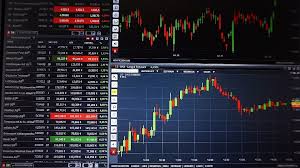Forex Trading Basics A Beginner’s Guide to Get Started

Forex Trading Basics: A Beginner’s Guide
Forex trading, or foreign exchange trading, is the process of exchanging one currency for another with the intent of making a profit. It stands as one of the largest financial markets in the world, with trillions of dollars traded daily. This beginner’s guide will walk you through the essentials of Forex trading and provide valuable insights to help you get started. For those looking to engage with local options, you may consider checking out forex trading basics beginners guide Forex Brokers in Jordan for region-specific trading opportunities.
Understanding Forex Trading
At its core, Forex trading involves currency pairs, with the aim of taking advantage of changes in currency value. For example, if you believe that the euro will strengthen against the US dollar, you would buy the EUR/USD pair. Conversely, if you anticipate the euro weakening, you would sell the pair.
Key Terminology
Before you dive into the Forex market, it’s crucial to understand some key terminology:

- Currency Pair: The quotation of two different currencies, where the first is the base currency and the second is the quote currency.
- Pip: The smallest price move that a given exchange rate can make based on market convention, usually the fourth decimal place (0.0001).
- Leverage: A tool that allows traders to control larger positions with a smaller amount of capital, but it also increases risk.
- Spread: The difference between the buying (ask) price and the selling (bid) price of a currency pair.
The Forex Market Structure
The Forex market operates 24 hours a day during weekdays, divided into different sessions: the London, New York, Sydney, and Tokyo sessions. Each of these sessions has different trading volumes and volatility, which can affect currency prices significantly.
Choosing a Forex Broker
Your choice of broker can greatly influence your Forex trading experience. Here are some factors to consider:
- Regulation: Ensure that the broker is regulated by a reputable financial authority, which provides a level of protection for your funds.
- Trading Platform: Look for a user-friendly platform with essential tools that suit your trading style.
- Fees and Spreads: Analyze the cost of trading, including spreads and commissions, as lower costs can lead to higher profitability.
- Customer Service: Responsive customer support can help resolve any issues you may encounter while trading.
Building a Trading Strategy
A successful Forex trading strategy can significantly increase your chances of making a profit. Here are the components you should consider while developing your strategy:
- Technical Analysis: Use historical price charts and indicators to forecast future price movements.
- Fundamental Analysis: Keep an eye on economic indicators, news reports, and geopolitical events that might affect currency values.
- Risk Management: Consider how much of your capital you’re willing to risk on a single trade. A common approach is to risk only 1-2% of your trading capital on each trade.
Practicing with a Demo Account
Before venturing into live trading, consider practicing with a demo account. Many brokers offer a demo account that simulates real market conditions, allowing you to test your strategies and gain experience without risking real money.
Emotional Control in Trading
Trading can be emotionally challenging. It’s essential to maintain discipline and not let fear or greed dictate your trading decisions. Stick to your trading plan, and don’t chase losses or become overconfident after a win.
Conclusion
Forex trading can be a rewarding pursuit for those willing to invest the time in understanding the market and developing a solid strategy. Always remember to stay informed, keep your emotions in check, and continuously work on improving your skills. With dedication and practice, you can navigate the exciting world of Forex trading effectively.
